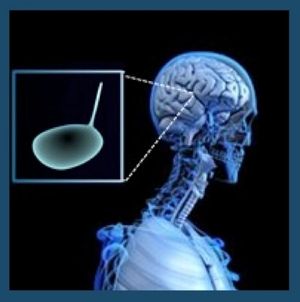Could epilepsy be caused by defective cellular antenna?
March 31, 2018

The motivation
The human genome includes many genes that encode proteins known as "kinases". The functions of many kinases inside cells are known, for example, some are important for cell division and are involved in a wide spectrum of human diseases, including cancer. Researchers identified a category of kinases, termed CDKL, for which little biological information was known. Humans have five types of CDKL proteins, and what makes this family of kinases particularly interesting is that one of them, CDKL5, is associated with the genetic disorder “Rett syndrome”. This syndrome is characterized by several neurodevelopmental defects, and includes epilepsy as one of its clinical manifestations.
The discovery
Leading an international team of researchers, Simon Fraser University’s Michel Leroux and his graduate student, Kwangjin Park, used the nematode C. elegans as a biological model to understand the function of CDKL proteins. C. elegans only has one CDKL protein, providing a simple system in which to reveal the biological functions of CDKL proteins. They found that the nematode CDKL protein localizes specifically to neuronal cilia, which are small hair-like cellular structures that act as “cellular antenna” and are essential for sensory physiology and development in humans. The nematode CDKL protein regulates the length of cilia. Notably, introducing any of three CDKL5 mutations found in humans into the nematode CDKL protein results in cilia length defects.
Its significance
The length of cilia is known to be important. The authors of this study propose that such length changes in nematode cilia may be relevant to the human disease. In collaboration with the Alex Bullock lab at the University of Oxford in the UK, they also uncovered for the first time the structures of human CDKL proteins. Now with knowledge of what these biomolecules look like, researchers can probe at the atomic level the functions of the CDKL proteins. Armed with this understanding, biomedical researchers will be in an excellent position to develop therapeutic molecules for the treatment of Rett syndrome, and potentially, other neurological disorders.
by Jacqueline Watson with Theresa Kitos
Read the paper
“CDKL Family Kinases Have Evolved Distinct Structural Features and Ciliary Function” by Canning*, P; Park*, K; Goncalves, J; Li, CM; Howard, CJ; Sharpe, TD; Holt, LJ; Pelletier, L; Bullock, AN; Leroux, MR. CELL REPORTS 22(4): 885-894 (2018). DOI: 10.1016/j.celrep.2017.12.083
Original source: https://www.sfu.ca/science/research/research-news/2018-03-Leroux.html